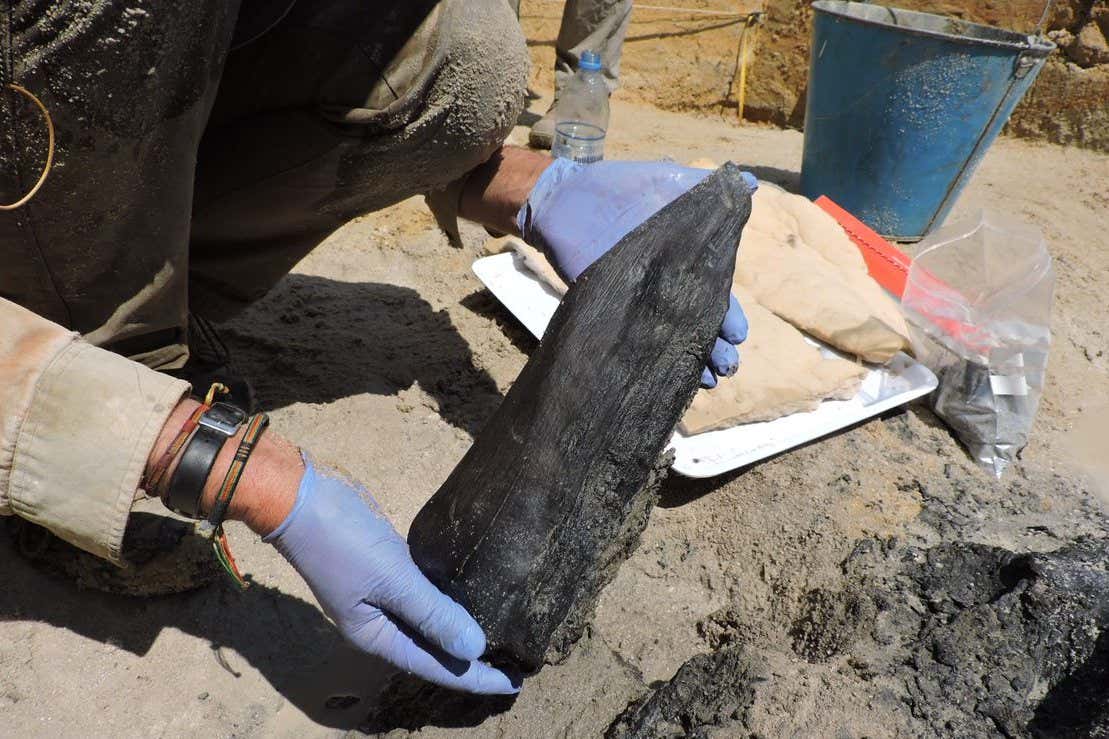Ancient humans were building large wooden structures – possibly houses – almost half a million years ago, according to a recent discovery. This finding challenges the belief that ancient humans were constantly on the move and suggests that some communities had settled lifestyles. The evidence was found at the Kalambo Falls archaeological site in Zambia by researchers from the University of Liverpool and Aberystwyth University.
The archaeologists uncovered a wooden tool and a 1.4-metre-long log that had been worked with tools to create a deep notch. This log was placed on top of a larger log, indicating the possibility of a larger wooden structure. Using dating techniques, the researchers estimated that these structures were built around 476,000 years ago, before our species, Homo sapiens, evolved. It is believed that the builders belonged to an earlier human species, possibly Homo heidelbergensis.
Prior to this discovery, it was known that ancient humans used wood, but mostly for portable purposes such as spears. The presence of large wooden structures at Kalambo Falls suggests that some ancient humans were choosing to stay in one place and improve their environment. This indicates a level of planning and investment that was previously not attributed to early human societies.
The ability to modify the environment, known as niche construction, is not unique to humans. However, the techniques used by the builders at Kalambo Falls were more sophisticated than those observed in other species. They involved producing sharp-edged stone tools, using them to cut through wood, and working in groups to transport and modify the wood.
The exact purpose of the wooden structures is unclear, but they could have been dwellings or walkways raised above a wet floodplain. However, it is important not to read too much into the function of just two pieces of wood.
This discovery challenges the prevailing notion of the “Stone Age” and highlights the importance of wood in the lives of ancient humans. It also raises questions about the complexity of early human societies and their relationship with their environment.
In conclusion, the discovery of these 476,000-year-old wooden structures provides valuable insight into the behaviors and capabilities of ancient humans. It challenges previous assumptions about their nomadic lifestyles and shows evidence of settled communities. The findings also shed light on the importance of wood in early human societies and the level of planning and investment involved in constructing large wooden structures.
Unique insights:
- The discovery of large wooden structures almost half a million years ago challenges the belief that ancient humans were always on the move.
- The engineers at Kalambo Falls, who built these structures, used sophisticated techniques involving stone tools to modify and transport wood.
- The ability to modify the environment is not unique to humans, but the techniques used by the builders at Kalambo Falls were more advanced than those observed in other species.
- The discovery raises questions about the complexity of early human societies and their relationship with their environment.
- It provides insight into the importance of wood in the lives of ancient humans and suggests that the “Stone Age” may have been more accurately described as a “wood age”.








